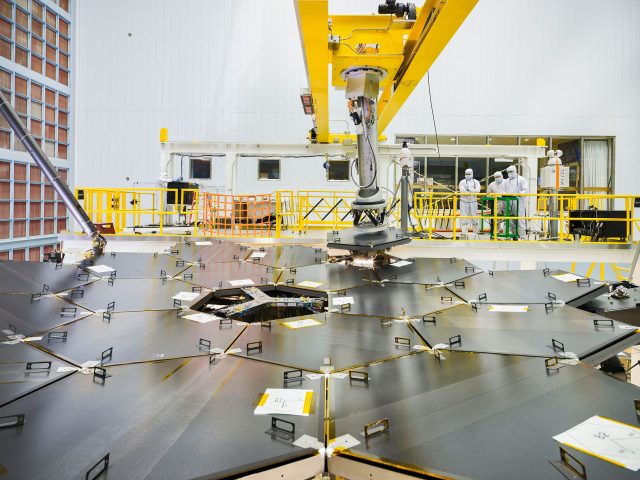
After years of delays and cost overruns, the James Webb Space Telescope is finally coming together. This week the 18th and final primary mirror segment of the telescope was installed onto the support structure at Goddard Space Flight Center. From here, additional optics must be installed, and the telescope requires testing to ensure it can withstand the forces of a rocket launch anticipated in late 2018.
Each of the hexagon-shaped mirrors weighs 40 kg and spans 1.3 meters. After launch, the telescope will be flown to the second Lagrange point of the Earth-Sun system, about 1.5 million kilometers from Earth. From there, it will begin observations. When deployed in space, the telescope will have a 6.5-meter diameter.
"Completing the assembly of the primary mirror is a very significant milestone and the culmination of over a decade of design, manufacturing, testing, and now assembly of the primary mirror system," said Lee Feinberg, optical telescope element manager at Goddard. "There is a huge team across the country who contributed to this achievement."
It has been a long road. First conceived in 1996 as a successor to the Hubble Space Telescope, the Webb's original budget called for just $500 million in funding. That amount has ballooned to $8.8 billion due to cost overruns and delays, sparking widespread criticism from Congress as well as scientists from other fields who have seen NASA's science budget squeezed to accommodate increased funding.
However, once the instrument flies it should provide an unprecedented view of the universe. Significantly larger than the 2.4-meter Hubble telescope, the Webb will observe primarily in the near-infrared region of the spectrum. Its primary goals include searching for light from the universe's first stars and better understanding the formation of galaxies and planetary systems.
reader comments
161